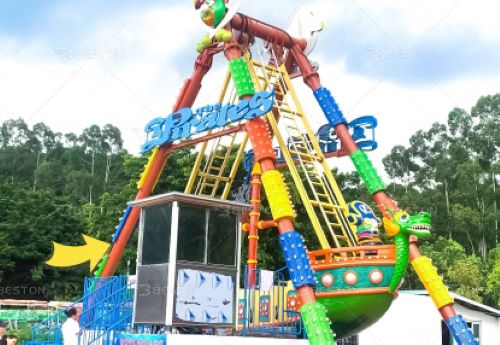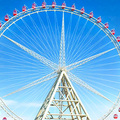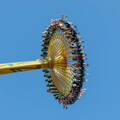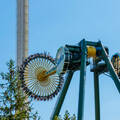The amusement industry has entered an evolutionary phase. Consumer expectations continue to escalate, driven by immersive storytelling, technological enhancements, and ever-increasing tolerance for intensity. As traditional boundaries blur between entertainment, technology, and engineering, high-thrill rides are no longer just about velocity and verticality—they are about delivering multi-sensory, emotionally charged experiences that challenge physical and psychological limits.
Nostalgic Formats with Modernized Engineering
Classic thrill rides have not disappeared; instead, they’ve been reimagined with new structural materials, digital enhancements, and more sophisticated motion profiles. A prime example is the pirate boat ride. Once a simple gravity swing powered by hydraulic lifts, today’s versions incorporate thematic LED lighting, real-time sound synchronization, and enhanced motion controls that amplify the pendular experience. This resurgence of retro formats underscores a trend: manufacturers are capitalizing on familiarity while integrating advanced engineering and control systems to increase impact without compromising reliability.
Additionally, modularity has become a critical feature in ride design. Modern pirate boat installations are increasingly designed for quick assembly and relocation, accommodating operators who prioritize flexibility and seasonal deployment. Compact versions are optimized for urban locations and indoor amusement centers, while larger builds cater to open-air parks with the capacity to host higher rider volumes.

Expanding Motion Envelopes and Ride Dynamics
The pendulum amusement ride exemplifies the shift toward more aggressive motion architecture. This ride type, characterized by its high-arc swinging movement coupled with axial rotation, represents a class of attractions designed to elicit intense physiological responses—specifically disorientation, weightlessness, and rapid alternation between acceleration vectors. Advances in drive systems—namely, magnetic and electric motor combinations—enable smoother acceleration curves and programmable motion cycles. This allows operators to vary intensity, either dynamically or by target demographic, without redesigning the core structure.
Simultaneously, manufacturers have begun integrating programmable logic controllers (PLCs) with smart diagnostics, giving operators access to real-time data on ride health, performance consistency, and energy consumption. This digital layer not only enhances safety but also optimizes operating costs over the ride’s lifecycle, a crucial consideration in high-load thrill installations.
Hybridization and Multi-Axis Experiences
One of the most significant developments in thrill ride design is hybridization—combining disparate motion systems to create novel ride experiences. Vertical towers with rotating arms, for example, combine free-fall mechanics with lateral spinning forces, adding a complex layer of sensory inputs that traditional designs cannot achieve in isolation. Likewise, coasters are being merged with suspended swing systems, where vehicles transition from rail-based tracks to dynamic pendulum segments within a single ride cycle.
This evolution directly influences the design of the pendulum amusement ride, which increasingly incorporates multi-axis motion and variable swing patterns to enhance thrill levels. Modern pendulum systems now feature rotating gondolas, synchronized lighting, and programmable swing trajectories that push the envelope of rider sensation while staying within strict safety parameters.
This approach enables ride designers to simulate a broader range of motion sensations, including negative G-forces, lateral drift, and 360-degree roll, all within tighter spatial footprints. Parks benefit from the visual spectacle and marketing value of such rides, often using their towering silhouettes and kinetic motion to anchor park layouts or draw foot traffic to new areas.

Immersive Theming and Sensory Amplification
While mechanical thrill remains central, the industry is embracing sensory layering to deepen rider engagement. Theming now extends beyond static props or set design. Integrated fog effects, scent dispensers, synchronized soundtracks, and projection mapping have become standard additions to high-thrill installations. These elements transform rides from mechanical devices into theatrical experiences.
More importantly, the implementation of responsive environments—where lighting, sound, and visuals adapt to real-time motion data—introduces a level of interactivity previously unseen in mechanical rides. Guests experience each cycle as unique, with varying light intensities or soundtrack cues tied to ride progression or rider feedback.
Rider-Centric Design and Variable Experience Levels
Demographic diversity has pushed operators to invest in thrill rides that can adapt their behavior. Adjustable intensity settings allow a single ride to cater to multiple audience segments—from thrill-seeking teens to more cautious adult riders. Configurable gondolas, for example, can toggle between locked-rotation and free-spinning modes, changing the intensity profile at the push of a button. These mechanical redundancies are paired with software that collects usage data, helping operators analyze peak demand times, rider behavior, and maintenance intervals.
Manufacturers are also considering biometric integration, where wearables or smart wristbands could help customize ride parameters in real time based on heart rate or motion tolerance. While still largely conceptual, the groundwork is being laid for rides that adapt dynamically to the human experience, not just mechanical programming.
Environmental and Operational Considerations
Sustainability is an emerging focus in the high-thrill sector. Larger installations with significant energy demands are incorporating regenerative braking systems and variable-frequency drive (VFD) motors to reduce consumption. Additionally, ride structures are increasingly being manufactured from high-tensile, corrosion-resistant alloys that extend operational lifespan while minimizing maintenance needs.
In some markets, particularly those with strict zoning or height regulations, vertical impact must be balanced with compliance. As such, several manufacturers have developed compact thrill rides capable of simulating large-scale motion using telescopic lifts, rotating capsules, or inverted track geometries. This ensures that thrill capacity is not sacrificed due to spatial or regulatory constraints.
The Future of High-Thrill Development
As artificial intelligence and augmented reality converge with ride engineering, the future of high-thrill experiences will likely involve adaptive narratives and user-selected intensity profiles. Riders may soon be able to influence their own ride path or storyline through gesture recognition or mobile integration. Beyond mere amusement, these systems hint at the gamification of thrill—a blend of entertainment technology and extreme motion engineering.
Meanwhile, collaborations between ride manufacturers, architects, and IP licensors are producing immersive mega-attractions that blend cinema-scale storytelling with amusement-grade motion systems. The delineation between ride and environment continues to fade, ushering in a new paradigm where thrill is not only felt but perceived through every available sense.
Conclusion
High-thrill amusement rides are no longer confined to brute-force mechanics and towering silhouettes. They are evolving into intelligent, responsive systems that merge engineering precision with sensory design. From enhanced versions of the classic pirate boat ride to the gyroscopic complexity of the pendulum amusement ride, the sector is leaning into innovation without abandoning its roots. This hybrid approach ensures that thrill remains not only relevant but at the cutting edge of the global leisure economy.





